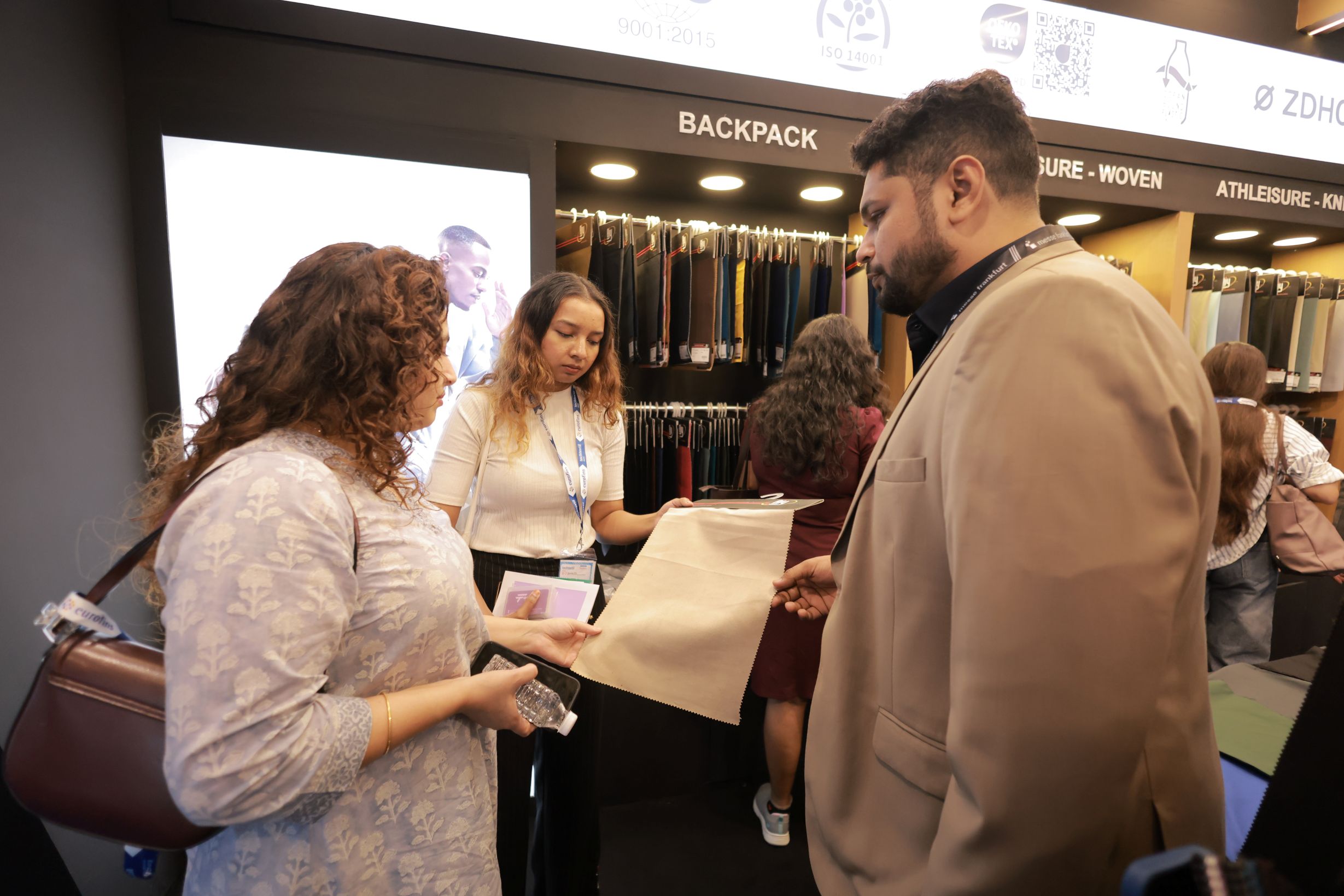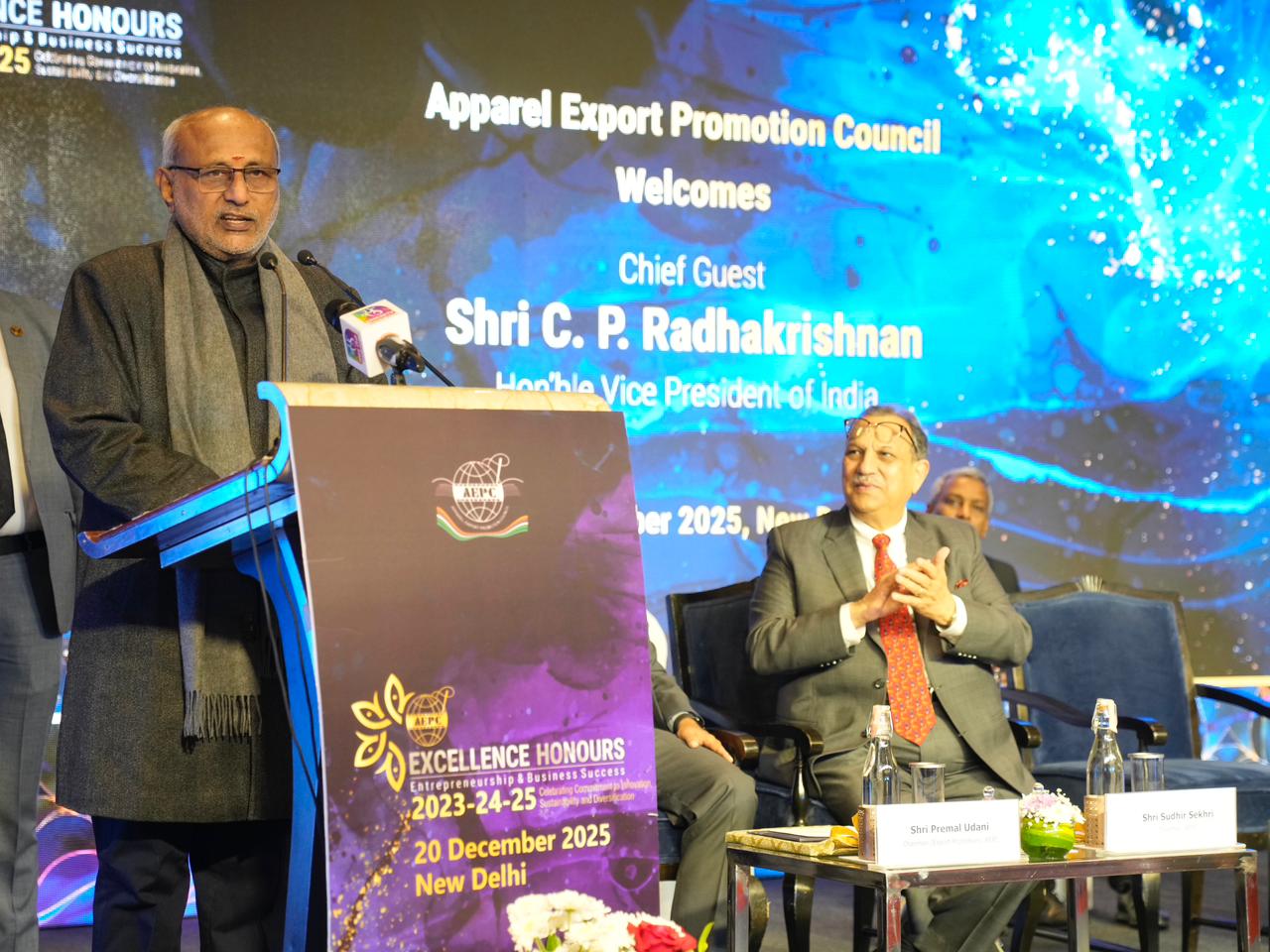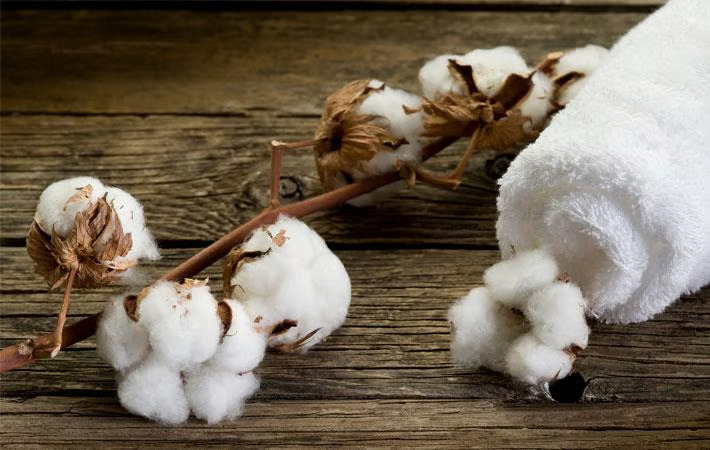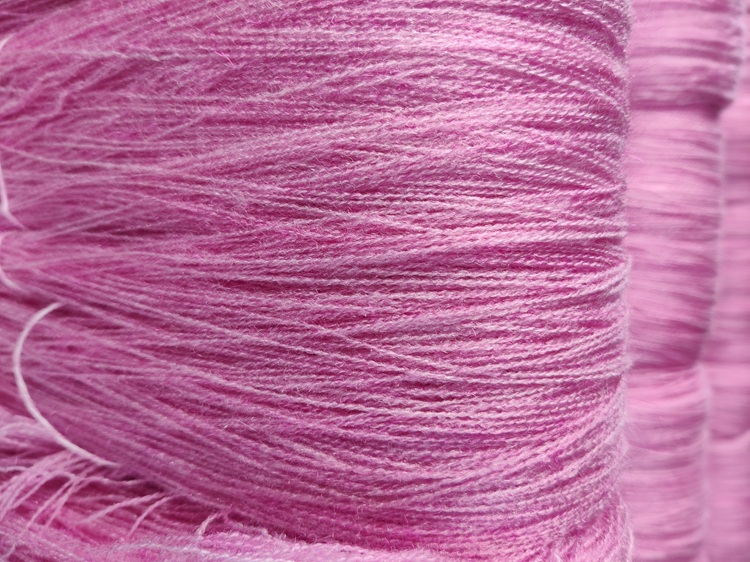FW
Australia’s wool market dipped a little last week, it produced only 33,000 bales. On the second selling day though, it improved and prices began moving upwards again. The market registered a small loss of 6 cents as measured by the EMI, overall. Buyers supported the best superfine wool, which was found in a designated superfine sale in Sydney. The Merino fleece types were generally only down 10 cents for the week.
The overall market tone affected the crossbred wools and dipped, then recovered, while a small supply of carding wools saw prices increase marginally. Prices in USD terms were 28 cents lower because of lower Australian dollar, and prices for European customers closed 26 cents lower over the course of the week. Overseas buyers generally decided to wait and watch because of the falling prices and hesitated to purchase large quantities.
Purchasing managers this year prefer to continue to purchase smaller quantities on a hand-to-mouth basis. For them, the risk is lower, though the cost is higher. This attitude does not allow for the regular forward planning for shipment of greasy wool from country of origin, combing of the wooltop and then further shipment to the spinning factory. Eventually, raw material would need to be secured, or contract prices for delivery at some point in the future by the companies planning price offerings for final garments in the 2016-17 season.
There’s a huge risk given the inherent volatility of the wool market in allowing the raw material price to fluctuate on the open market when the delivery price of the finished product has been contracted. Thus, the market should see the forward buying activity go up when the larger orders are placed in the next couple of months.
Apparel retailer American Apparel has received a cautionary letter from the New York Stock Exchange. The letter mentioned it was not adhering to compliance guidelines because “it has sustained losses which are so substantial in relation to its overall operations or its existing financial resources. that it appears questionable, in the opinion of the exchange, as to whether the company will be able to continue operations and/or meet its obligations as they mature.”
American Apparel has been asked to come into compliance by November 15, 2015. If their plan is approved, the exchange will continue monitoring the company and review its progress on executing the plan, the filing by American Apparel said. If the company doesn’t submit a plan or if the exchange deems the plan unacceptable, it will start delisting process.
In a securities filing, the company said it was reviewing the exchange’s issues and has started preparing a plan on how to return to compliance. However, it added, there is no assurance that it will be able to submit a plan that addresses all problems and concerns of the stock exchange.
American Apparel, for its second quarter ended June 30, 2015 reported that net sales decreased 17.2 percent to $134.4 million from $162.4 million for the same period in 2014. Excluding the year over year impact from foreign exchange and stores closed in 2014, net sales decreased 14 percent from the same period in 2014.
www.americanapparel.net
Commerce and Industries Minister Govindas Konthoujam distributed cheques under the North East Region Textiles Promotion Scheme (NERTPS) among 110 Self Help Groups (SHG) of 11 Handloom clusters from Bishnupur district.
Konthoujam in his speech said that such useful schemes should be properly utilised by weavers and they should work with sincerity and dedication. “To receive the second instalment, weavers must show interest and provide their best efforts to bring out the best quality products and take part in the upcoming training sessions so that the textiles ministry grants weaver with the remaining payment,” he added.
He explained that the present schemes will be strictly monitored by the ministry of textiles through the Geographical Information System (GIS). With GIS, the ministry will be able to monitor all activities of the weavers ranging from training to weaving online. The broad objective of the NERTPS is to develop and modernise the textile sector in the North East Region by providing government support in terms of raw material, seed banks, machinery, common facility centres, skill development, design and marketing support.
www.texmin.nic.in
Traditional weaving methods are thriving in Uzbekistan. The Fergana valley in Uzbekistan manufactures and exports silk. Uzbek traditional embroidery techniques are in trend as fashion and historical costumes.
One of the fabrics is embroidered with silk threads. It’s called suzani. Another is ikat woven with hand-spun silk yarn. Ikat from Uzbekistan uses a resist dye process whereby the warp yarns (vertical threads) are bound and dyed by hand before being woven with weft yarns (horizontal threads). Printed ikat designs are often worn by Uzbeks themselves, who can’t afford the premium quality imparted by pure silk fabrics.
Gossamer threads unravelled from the cocoon of the silk worm are spun into the finest raw silk yarn, and bundles of silk threads are hand painted and dyed using the relief technique before being woven on hand looms.
Fashion brands have consistently sought Uzbekistan textiles. While both suzani and ikat being important cultural and household items in Uzbekistan, the current trend for sustainability, craft and ethical products has helped spark a revival of Uzbek textiles in international fashion.
Ikat designs are being reinterpreted for their contemporary customers — bloggers, models, globetrotters. The tunics and harem pants reflect the nomadic, caravan lifestyle of bygone Silk Road traders.
With the promise of Trans-Pacific Partnership (TPP), Vietnam is seeing a wave of investment from foreign textile and garment manufacturers keen to cash in on the tax benefits. Vietnam’s clothing makers are in a race to find the right suppliers as its own textile mills only produce a fifth of the country’s needs today.
The TPP being negotiated by 12 countries, including the US, promises major tax cuts for Vietnam’s garment exports, but only if they use fabric made locally or in other TPP countries, which excludes China. However, the raw material for more than half of the garments made in Vietnam comes from China as sourcing locally is tough and expensive. Even some zippers or some special raw materials are very difficult to find.
For years, Vietnam has focused on far less capital intensive part of the global garment business: cutting and sewing the final products for export. Value addition to the products is low. Businesses that do not have the capital to invest are stuck waiting for large domestic or international producers to build up their local fabric supply. So, for Vietnam’s thousands of small and medium-sized garment makers, the benefits of TPP are not too obvious.
About a 100 handloom weavers in Tamil Nadu will be offered training for 50 days under the Integrated Skill Development Scheme (ISDS). During training the weavers would also be given a daily stipend of Rs 150. The training imparted to weavers in the centre would help them develop new designs and come out with diversified products with improved quality to meet changing market needs and enhance their earnings.
In the first batch, 20 weavers will be trained and all 100 weavers will be covered in the next 10 months. The training centre is equipped with all necessary infrastructure facilities, including looms, motorised jacquard boxes, computerised design machines, computerised card punching machines, and motorised winding machines to help weavers upgrade their skills and get updated with emerging technologies.
ISDS was launched to address the manpower needs of textile and related segments including handicrafts, handlooms, sericulture, jute and technical textiles and develop a cohesive and integrated framework of training based on industry needs.
The scheme envisages a substantial skill program, which aims to develop around 30 lakh persons in the next five years. Skill development and entrepreneurship programs for women are a specific focus of the scheme. It also seeks to connect entrepreneurs to mentors, incubators and credit markets, foster innovation and entrepreneurial culture, improve ease of doing business and promote a focus on social entrepreneurship.
Sweden will fund a five-year project in Bangladesh’s RMG industry. The new initiative, which will continue from November 2015 to December 2020, is aimed at enhancing labor relations through improved dialogue between employers and workers, particularly at the workplace level.
Conciliation and arbitration mechanisms will be strengthened to become a more effective, trusted system. The capacity of workers and employers will be enhanced to engage in social dialogue and collective bargaining as well as to make effective use of dispute prevention and resolution mechanisms.
The project will also engage international buyers and trade unions. Although initially it is targeting the garment industry, the impact of the project will eventually cover all sectors. Sweden will partner with Bangladesh and ILO in this project, especially as it focuses on a sector where 80 per cent of workers are women.
This is a new endeavor in a series of initiatives undertaken in the clothing sector following a factory disaster in 2013. Bangladesh’s clothing sector has grown rapidly since the 1980s and currently comprises some 3,500 export-oriented factories which generate over 80 per cent of the nation’s export earnings. The industry currently employs an estimated 4.2 million workers. The European Union and the US are Bangladesh’s main garment export destinations.
The apparel retail apparel industry in Nepal has been hard hit after the earthquake. This year the festive season lacks cheer as sales are yet to pick up. April and May are the peak season for sales as it is the wedding season. However, most orders got cancelled due to the national disaster. Imports from India have been lower than usual. Instead of 100 pieces only five pieces are coming in after delays. Some stores have put up last year’s stock since new arrivals are stuck at various border customs points.
Meanwhile clothing and apparel outlets are offering attractive discounts. At some shops sales have decreased by almost 50 per cent. Some retailers say the earthquake has not affected business but the political unrest and turmoil has taken its toll. Most retail outlets in Nepal are also actively marketed on social networking sites. They display their latest arrivals on their official Facebook pages. Footfall at clothing stores have decreased significantly due to the shortage of new arrivals.
Most store owners are cautiously hopeful about the festive season. They plan to introduce new schemes, promotional activities through social media and huge discounts to attract more customers to at least meet overhead costs.
The Istanbul Textile and Apparel Exporters Association (ITKIB) is the largest association of light industry enterprises in Europe with more than 16,000 members. ITKIB members account for about 15 per cent of the total amount of Turkey’s merchandise exports, including exports of readymade garments, textile products and raw materials, leather and leather goods and carpets.
ITKIB’s main objective is to enhance Turkey's export potential, help members do more business globally and contribute to the development of bilateral and multilateral trade relations. An ITKIB delegation is visiting Belarus from September 28 to October 1 to hold meetings with Belarusian partner organizations. The sides are discussing the prospects of trade, economic, and manufacturing cooperation and the implementation of investment projects aimed at the market of the Eurasian Economic Union in Belarus. Besides. The visit will visit Belarusian light industry enterprises and promising investment platforms.
Turkey’s major exports are textiles and clothing, automotive, iron and steel, white goods and chemicals and pharmaceuticals. Turkey is also one of the leading shipbuilding nations. The country’s main export partners are Germany, Iraq, UK, Italy, France, US, Russia, Spain, UAE and Iran. Exports account for about 10.4 per cent of Turkey’s economic output.
The Apparel Training and Design Centre (ATDC) signed an MOU with Andhra Pradesh State Skill Development Corporation (APSSDC) for training and skilling workers in the rapidly growing textile/fashion related sectors. Imparting employment-oriented training and encouraging entrepreneurship through skill development to the youth and women is the aim of the MoU, which has been signed for an initial period of two years. Skill-training programs will be offered by ATDC and APSSDC in the capital for the rural population engaged in the land pooling process.
School dropouts and college graduates from all over the state are the target groups. ATDC will offer specific vocational training programs according to the skills needed for the job and industry demands.
As Darlie Koshy, DG&CEO of ATDC said that ATDC would not leave any stone unturned to impart the necessary skills to empower students, which would help them in getting jobs and starting their own business. That special emphasis would be laid to impart soft skill and communications to groom trainees. This MoU is set to be a significant help to achieve and train maximum people. Koshy also said that ATDC is planning to set up a training centre in Tenali with the support of NSL Textiles (Guntur Garments) 28 kms from Vijayawada, immediately.












